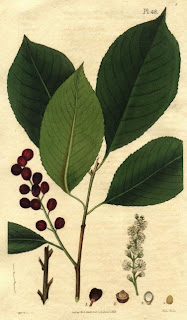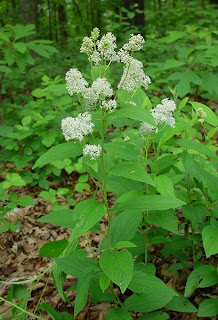WILD CHERRY

Latin Name: Prunus serotina
Alternate Names: Virginian Prune Bark
Family: ROSACEAE
Parts Used: Dried inner bark, collected in fall.
Properties: Antispasmodic, Antitussive, Astringent, Bitter Tonic, Carminative, Expectorant, Sedative, Stomach Tonic.
Internal Uses: Asthma, Bronchitis, Colds, Cough, Diarrhea, Dysentery, Dyspepsia, Insomnia, Whooping Cough
Internal Applications: Tea (do not boil), Tincture, Capsules, Syrups.
Wild Cherry bark is best known as a remedy for coughs. Helps dyspepsia due to nerves. The prunasin appears to be what relaxes the reflex to cough.
Wild Cherry bark is best known as a remedy for coughs. Helps dyspepsia due to nerves. The prunasin appears to be what relaxes the reflex to cough.
Topical Uses: Inflammation
Topical Applications: Eyewash for inflammation.
Culinary uses: Fruit of Prunus avium (the common cherry readily available in stores) as well as wild cherry is eaten plain, added to pies, jams, juice, liqueurs and wine.
Energetics: Bitter, Warm, Dry.
Chemical Constituents: Nogenic glycosides (prunasin), benzaldhyde, essential oil, coumarins, gallitannins, resin.
Contraindications: Cherry seeds are toxic due to thier high content of hydrocyanic acid and should not be eaten. Bark is toxic in large doses. Do not boil bark, but simply steep in hot water. It may cause drowsiness. Though it helps coughs, it does not treat infection which may be causing the cough. Do not use during severe infection. Avoid using the leaves internally.
Comments: The genus name, Prunus, is an ancient name for 'plum'. The word cherry traces back to the Assyrian word karsu. Some Native American women used Wild Cherry bark to relax them during labor.
The common name Wild Cherry includes the species Prunus virginiana, as well as some other Prunus species, which are used interchangeably with Prunus serotina.
The common name Wild Cherry includes the species Prunus virginiana, as well as some other Prunus species, which are used interchangeably with Prunus serotina.

